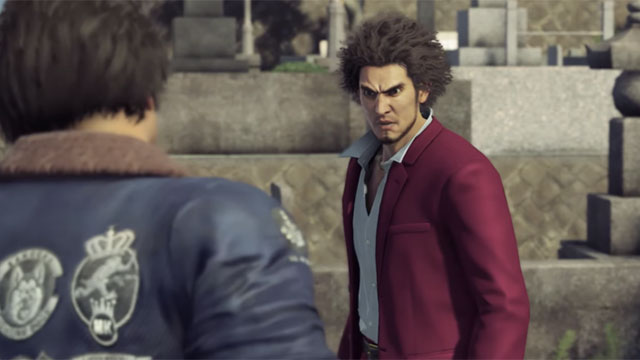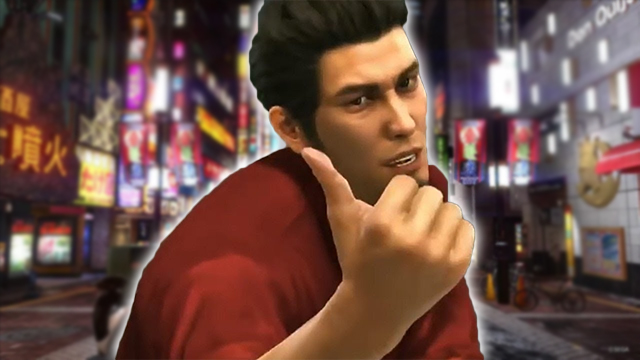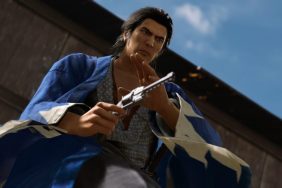Yakuza 7, or Yakuza: Like a Dragon like it will be officially known as in North America, represents a lot of firsts for the long-running series. The obvious things that first come to mind are the change of protagonists as it will be the first title in the series to not star Kazuma Kiryu, and that the franchise is replacing its brawling action with combat that seems ripped straight out of a turn-based role-playing game. There is another more meaningful change, though, and that is the departure from Kamurocho, the fictional part of Tokyo that the entire series has partially taken place in over the years. Instead, the game will take place in the real-life city of Yokohama. For a long-time fan, this is both an exciting and sad piece of news as no other virtual location has ever felt quite as lived in as Kamurocho.
There’s something to be said about the value of venturing back to a fictional locale in gaming. One of Grand Theft Auto: San Andreas‘ greatest scenes was getting to leave Rockstar’s version of California and visit a small portion of Liberty City again. It was the perfect use of nostalgia, and that same series had great success by leveraging players’ memories and fondness for locations in its PSP spin-offs as well. It wasn’t simply the developer reusing a bunch of assets, although that is an obvious perk, but the studio got to show off known locations in a new way. Likewise, the Pokemon Gold and Silver had a similar moment where players got to revisit the Kanto region after they had won all the badges that Johto had to offer. It was a great post-game activity and players got to see how the land had changed since the first game in the series.
ALSO: Yakuza 7 RPG combat style will allow for more over-the-top antics
However, no series has kept a same central locale in the spotlight quite like how Ryu ga Gotoku Studio has done with Kamurocho. Every single release from Yakuza 0 to Yakuza 6: The Song of Life has featured the location and its same street layout. The city has changed a lot in the 30 years the series spans, as you see fads come and go, and businesses go out of business over time and get replaced, but it’s still the same location. This is far unlike something like the Mushroom Kingdom, which simply changes from game to game in order to fit the needs of that particular story. Instead, Kamurocho is one piece of the Yakuza series that was always reliable. No matter if you were playing the PlayStation 2 original or Judgment, you knew exactly where Pink Street was and where the pawn shop was located. No matter how much the gameplay changed, there was a calming sense of familiarity with the location.
Every inch of Kamurocho brings back memories

What’s so incredible about Kamurocho being reused over the years is that it isn’t that big of location. It’s much smaller in scale than even Grand Theft Auto 3‘s world was and there are only a handful of streets that can be explored. However, the series has done so much to bring every nook and cranny to life over its highly-successful run with Kiryu as its main protagonist. There is no part of the map that has ever been ignored or not used as every single area has been a part of the main story or one of its many humorous and emotional substories. Take a die-hard Yakuza fan to any part of the map and they can probably rattle off two or three events that they remember happening there over the course of the series.
Any time I’m back in Kamurocho, I’m flooded with memories. There is the children’s park where I’ve helped a father retrieve his kidnapped son, beat up an assassin, helped a businessman that couldn’t handle his liquor, and mended the relationship of a police detective with his daughter. Even many of the restaurants hold memories as the coffee place doesn’t just deliver great service, but was the place where a murder occurred and was later solved years later. It’s weird to feel so much nostalgia over a video game location, but I’ve spent so many actual days walking around the fictional city, and learning every inch of its layout, that it’s a bit sad to see the series go in a different direction.
Of course, this isn’t the first time that the series has ventured to other locations. Ever since Yakuza 2, the series has juxtaposed the familiarity of Kamurocho with a fresh locale like Okinawa and Sotenbori. Like a Dragon will also feature a few brief nods to it, and thus the series past, by having new protagonist Ichiban Kasuga’s story begins in the city, but he’s quickly thrown out of it and forced to live in Yokohama. Obviously a twist could happen and the character could return to it, but so far developers have been adamant that it will focus on the new city, which is said to be over three times bigger than Kamurocho.
It’s time to let go and say goodbye to Kamurocho… for now at least

While it is sad to let go of Kamurocho, it’s pretty fitting that the Yakuza series is moving on from it. After all, that city was owned by the “Dragon of Dojima,” Kazuma Kiryu. Likewise, Ichiban Kasuga will get a chance to make Yokohama his home, and players will get to build plenty of new memories unique to the character rather than having them build upon the past. Yakuza 7 is trying to differentiate itself, after all, and a new setting seems like a good way to get that across. It certainly appears like there will be plenty to do there considering the sheer size of the location, which is far more apt for a role-playing game than Kamurocho’s handful of streets and alleys. The team has made Kamurocho a fantastic city, and it’s entirely plausible it can do that again.
While it seems likely that Kamurocho will resurface in the future, be it in a future Yakuza game or a sequel to Judgment, for now it’s time to say goodbye to a location that has delivered constant smiles and some of the most memorable moments in all of gaming since 2005. We’ve seen entire sections of the town burn down, gigantic towers get built, and cabaret clubs come and go, but even if Yokohama ends up being a great city, our fond impressions of Kamurocho won’t be going anywhere.










